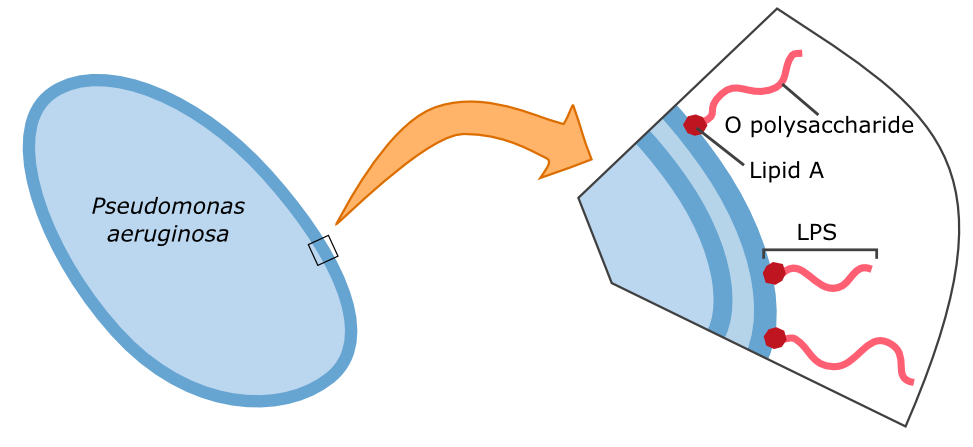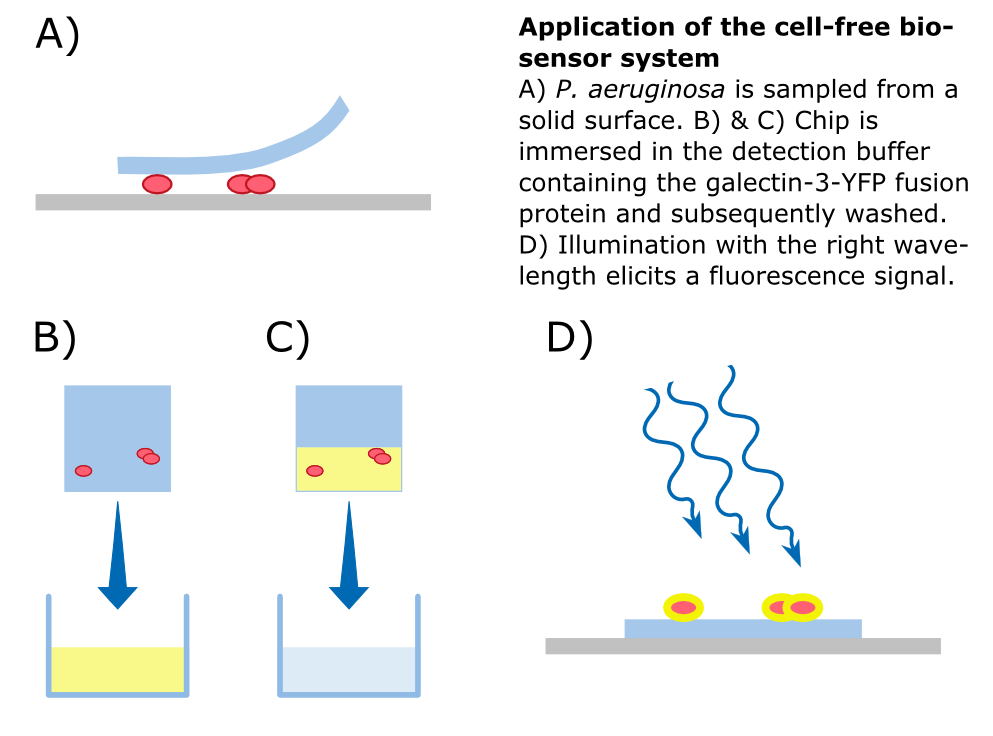Team:Aachen/Project/Gal3
From 2014.igem.org
m |
m |
||
| Line 14: | Line 14: | ||
In our approach, a '''galectin-3-YFP fusion protein''' is built and expressed in ''E. coli''. A his-tag and a snap-tag for purification are included. The fusion protein can then be incorporated into a '''cell-free biosensor system'''. Such biosensors have many advantages over systems that use living cells; storage, for example, is much easier. From a [https://2014.igem.org/Team:Aachen/Safety biosafety] and social acceptance perspective, it is also advantageous if the sensor system does not contain live genetically modified organisms. | In our approach, a '''galectin-3-YFP fusion protein''' is built and expressed in ''E. coli''. A his-tag and a snap-tag for purification are included. The fusion protein can then be incorporated into a '''cell-free biosensor system'''. Such biosensors have many advantages over systems that use living cells; storage, for example, is much easier. From a [https://2014.igem.org/Team:Aachen/Safety biosafety] and social acceptance perspective, it is also advantageous if the sensor system does not contain live genetically modified organisms. | ||
| - | {{Team:Aachen/Figure|Aachen_14-10-09_Cell_Free_Biosensor_iNB.png|title=Application of the cell free biosensor system|subtitle=A) ''P. aeruginosa'' is sampled from a solid surface. B) The cells stick to the chip which is immersed in the detection buffer containing the galectin-3-YFP fusion protein. C) Excess protein is removed with a washing buffer. D) The chip is illuminated with the excitation wavelength of YFP. Fusion proteins stuck on cells will give a fluorescence signal that is recognized and anlayzed by our measuring device.|width= | + | {{Team:Aachen/Figure|Aachen_14-10-09_Cell_Free_Biosensor_iNB.png|title=Application of the cell free biosensor system|subtitle=A) ''P. aeruginosa'' is sampled from a solid surface. B) The cells stick to the chip which is immersed in the detection buffer containing the galectin-3-YFP fusion protein. C) Excess protein is removed with a washing buffer. D) The chip is illuminated with the excitation wavelength of YFP. Fusion proteins stuck on cells will give a fluorescence signal that is recognized and anlayzed by our measuring device.|width=250px}} |
To detect ''P. aeruginosa'' cells, an agar chip could be used to sample a solid surface. The chip is then be immersed in a detection solution containing the galectin-3-YFP fusion protein. After a washing step, the galectin-3 would remain bound to the pathogen while '''illumination with 514 nm''', the excitation frequency of YFP, in a modified version of our measurement device reveals the location of the cells. The picture taken by the measurement device can then be analyzed by our software ''Measurarty''. | To detect ''P. aeruginosa'' cells, an agar chip could be used to sample a solid surface. The chip is then be immersed in a detection solution containing the galectin-3-YFP fusion protein. After a washing step, the galectin-3 would remain bound to the pathogen while '''illumination with 514 nm''', the excitation frequency of YFP, in a modified version of our measurement device reveals the location of the cells. The picture taken by the measurement device can then be analyzed by our software ''Measurarty''. | ||
Revision as of 18:55, 9 October 2014
|
|
|
|
 "
"

